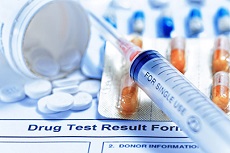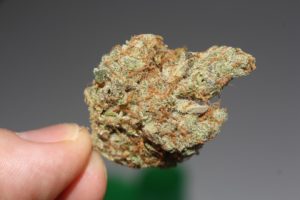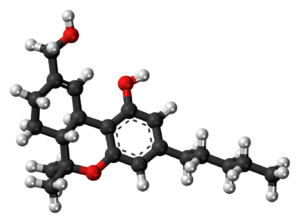
Drug testing in American workplaces became more common after 1986 when federal employees become officially forbidden from using illegal drugs. However, as states began changing laws to allow consumption of marijuana for medical use or even recreational use, this federal law that encourages drug testing has become an issue. Particularly for companies that have federal contracts and are based in a state where recreational use of marijuana is completely legal. Over this time, propagation techniques and cultivation has meant that concentration of THC levels has found to have been steadily increasing. This has become a problem for people who are in proximity to others who are smoking the drug, even if they are not imbibing themselves, as workplace drug testing that uses a hair strand drug test may still pick up traces of THC long after the exposure period, creating a false positive result purely from exposure. Questions arise about how long after exposure can trace of the drug still be detected in your system and do different tests produce different results.

Types of Testing
The cannabinoids in marijuana are fat soluble. This means that they are stored within the fat cells in your body, meaning that they stay in your system longer. THC can be detected for up to 3 months after exposure to the drug.
Tests primarily use blood, urine, hair or saliva samples to detect specific drug markers in your system. People who have not consumed but are still concerned about testing positive for marijuana due to exposure, particularly to smoke, can look at different options to speed up a detox process. Some of these methods can be found on sites like drugtestingreviews.com.
Hair Sample Testing
Hair testing is primarily looking for a combination of THC/CBN/CBD and can be combined with screening for other classes of drugs. A sample of hair is cut from the head and sent to a laboratory, where it is washed and analysed for cannabis metabolites. Although it will depend on how heavy and prolonged your exposure to the drug was, it can be detected in a sample of your hair for up to 90 days.
Blood Sample Testing
Cannabis can be detected in the blood stream almost immediately after exposure. Because it is a fat-soluble drug it cannot be flushed out of your system quickly as with water soluble drugs. Generally, it will be undetectable after a few days, but for chronic users weed has been detected in blood tests for up to 25 days after smoking.
Saliva Sample Testing
Marijuana can be detected in your saliva almost immediately after smoking or ingesting and be detectible anywhere from between 3 days to a month afterwards, depending how much you smoked, and how often. Saliva testing may be used on the roadside along with alcohol breath-testing.
Urine Sample Testing
Urine testing is one of the most common types of test for cannabis use. When you smoke or eat marijuana, THC is stored in your organs, and released into your bloodstream, which in turn is filtered through your liver. Eventually the cannabinoid metabolites are excreted from your body through your urine. Weed can take some time to leave your system. If you use marijuana no more than once every few days, it may still be in your system up to three days after your last session. However, if you use several times a day, every day, it may stay in your system for more than a month after your last session.
Terminology
Understanding some of the technical terminology used by drug testing companies can be confusing and overwhelming. So, this is a short list of the common terms:
Cannabinoid Receptors
These a type of cell membrane that are located throughout the body (brain, central nervous system, lungs, liver, kidneys, immune system and in certain types of stem cells). Cannabinoid receptors are involved in appetites, pain-sensation, mood and memory. You can go to this link, https://en.wikipedia.org/wiki/Cannabinoid_receptor to know more about Cannabinoid receptors.
Cannabinoid
Cannabinoid is the name for a group of different chemical compounds that cause an effect, change or otherwise interact with the cannabinoid receptors.

Tetrahydrocannabinol (THC)
There are over 100 cannabinoids in marijuana, THC is the primary ingredient that gives the “high”. It can be detected in blood, urine, hair, spit or sweat.
11-nor-Δ9-tetrahydrocannabinol-9-carboxylic acid (THCA)
THCA is a cannabinoid that is found in undried cannabis and has no psychoactive properties. However, as the cannabis plant is dried (including through cooking/baking into edible products or through vaping) the THCA converts to THC.
Cannabinol (CBN)
CBN is usually found in small amounts in older cannabis or hashish. It is non-psychoactive but is used as a marker in drug testing to prove the use of Marijuana.
Cannabidiol (CBD)
CBD is the cannabinoid found in cannabis that is credited for relieving multiple sclerosis symptoms. It may also help to reduce any negative effects that THC may have, particularly when taken for medical use.
Cannabichromene (CBC)
CBC is the cannabinoid credited with relieving pain due to its purported anti-inflammatory properties.
Cannabivarin (CBV)
Cannabivarin has no psychoactive properties and is found in only small amounts. It is also known as cannabivarol. CBV may also be used as marker for detecting marijuana consumption in drug tests.
Cannabis
The common name of the psychoactive drug obtained from the Cannabis plant. Also known (amongst others) as marijuana or weed. It is used both medically and recreationally, with differing legal status around the world, and in different states within USA. The plant can be consumed by smoking, vaporising, as an oil or within food. Generally, effects are noticed within a few minutes to an hour, and can last up to six hours. The three main species of the plant are Cannabis sativa, Cannabis indica, and Cannabis ruderalis.
Metabolite
This is a term used to describe small molecules that have been metabolised by the body. With drug testing the term is used to describe the cannabis metabolites that the tests are trying to detect.






